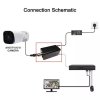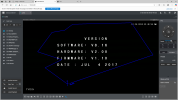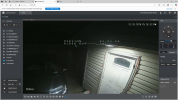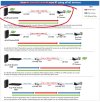Hey, I came across these on ebay looking for a solution for using existing HD-TVI/BNC cameras on an NVR: 1 Channel Video Server 1080P HD (CVI/TVI/AHD) to IP Camera Converter CCTV | eBay

Anyone ever used one before (or even heard of such a thing)?
I know "regular" BNC to RJ45 baluns do NOT convert the signal from HD-TVI to a digital stream, but it appears that's what these are for.
Kind of expensive at $30 a pop when you can get an 8-Ch DVR for $50 new, but still kinda interesting. Thoughts?

Anyone ever used one before (or even heard of such a thing)?
I know "regular" BNC to RJ45 baluns do NOT convert the signal from HD-TVI to a digital stream, but it appears that's what these are for.
Kind of expensive at $30 a pop when you can get an 8-Ch DVR for $50 new, but still kinda interesting. Thoughts?
As an eBay Associate IPCamTalk earns from qualifying purchases.




